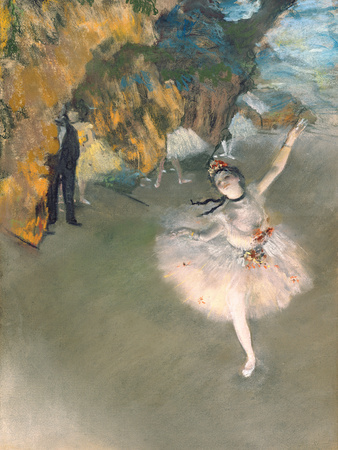Whether you’re a student approaching that exciting time of getting your first pointe shoes or need to get a better fitting than what you have now, it’s important to understand how each part of a pointe shoe should fit for optimal performance.
Bare in mind that you must also reassess your pointe shoe’s fit periodically, so that your dancing reflects your complete abandon to your role (and not to an ill fitting shoe).
In addition, your feet change constantly and so do the roles you might be dancing. Some roles require more from your pointe shoes, others, require less.
As a student or a teacher, you need to be able to identify a correctly and incorrectly fitted pointe shoe.
Here are some great guidelines on how to find pointe shoes that fit correctly, brought to you by the smart folks at Gaynor Minden.
But first, let’s take a brief look at who is behind the maker of Gaynor Mindens.
Elisa Ganynor Minden designed and developed the Gaynor Minden pointe shoe. The impetus to create a better pointe shoe came from her own extensive experience in ballet and from her frustration with the conventional pointe shoe.
More on Gaynor Minden’s technology and how she created her pointe shoes.
How To Find Pointe Shoes That Fit Correctly
Before we start, please take into account that your first fitting will probably take anywhere from forty-five minutes to an hour or even more, depending on the number of customers at the store. If you’re fortunate enough to have a professional fitter available in your area, he/she will usually give you a hour long appointment where only you will be her customer.
If this isn’t the case, then arm yourself with patience and know that your first fitting will require more time and subsequent fittings will be easier and shorter as you’ll have more experience the next times you shop for your pointes!
The time you invest in finding your best possible fit will definitely pay off in comfort and better performance of you and your shoes.
Video 1: Getting Started
What size am I? In this first video, you’ll learn what your correct pointe shoe size is.
Start by measuring your foot on a Brannock Device® to see length, width, foot shape and toe configuration. (You’ll learn more on toe configuration on the next set of videos which will teach you which toe pads and cushions will benefit your fit).
- Determine your Length (1/2 size up from your street shoe size, measured with the Brannock Device®).
- Choose Box size: Box is the area in front of the metatarsal. Must fit for support and comfort. (See image above).
- Determine your Width: Width is the area in back of the metatarsal. (See above image).
The width of the shoe and the shape of the box are two separate elements.
Video 2: Fine Tuning the Length, Box and Width
- Is the Length correct? Toes should be touching but not pressing against the end of the Box when standing flat. The toes should be flat, not curled under nor overlapping side-to-side. Do a demi-plié to make sure your toes stay flat.
- Next, place one foot on pointe (without standing on both feet, just one) and check to see the length of the shoe in the Heel. You should be able to pinch 1/4 of an inch in the heel at the drawstring casing. If you can’t pinch any fabric, the shoe is too smal. And if can place your finger between the foot and the fabric at the Heel, the shoe is too big.
- Is there a crease in the shoe where the box ends, especially when on pointe? If there is wrinkling around the metatarsal area, the Box is probably too narrow. But it can also indicate that the Width (remember the Width is the area in back of the metatarsal. See above image).
- First try a bigger Box and see if the crease disappears. If not go back to the previous Box size and increase the Width. Getting the right fit is a matter of testing different combinations until you get the one just right for your foot!
- Do you sink into the Box when you stand on pointe? In the video, Denise’s shoe is a #3 Box. That is too large for her foot, as you can see lots of space between her heel and the shoe when she places her left foot on pointe. But on her left foot, she is wearing a #2 Box and has no extra fabric in the Heel and no creasing in the Box. Her right Box size is a 2.
- Is the shoe twisting? Look at the shoes from behind (in the mirror) while standing on pointe.
Let’s sum up: Fitting the Metatarsal is essential!
- No creasing at Box
- No sinking in shoe
- No twisting at Heel
Video 3: Selecting the Vamp and Heel
Once you’ve selected the correct Box and Width, now you can fit your shoe for Vamp depth and Heel height.
Vamps can go deep or shallow. Ask yourself: Do I have long toes or short toes? If you’re not completely sure, try standing on the point shoe: Are you being pushed too far over the Box, or is your foot being held back (as shown on the video)? Your foot should look like the right shoe in the image just above, where the dancer if fully on pointe.
For long toes, it’s best to try a deep Vamp. For shorter toes, a shorter Vamp.
There is also Shank strength to consider.
If you’re foot is going too far over her Box, when on pointe, you need to first raise the Vamp. If you’re already in a deep Vamp, then you’ll have to try a stronger Shank to increase support in your arch. However, if your foot is being held back, you may need to Lower the Vamp and/or choose a Softer Shank.
Now let’s take a look at the Heel of your shoe. You may need a high heel (more fabric in the back), or a lower Heel, with less fabric in the back. This depends on whether you have a wide or narrow Heel.
A lower Heel will fit snugger and may require you to go 1/2 a shoe size up.
Video 4: Choosing Shank Strength
If this is your first pair of pointe shoes, you might want to start with a stronger Shank until you have enough strength in your ankles and arches to try a softer Shank.
How To Find Pointe Shoes That Fit Correctly
If you found this tutorial helpful, please sign-up for our free newsletter (once a week) on the right column and never miss a post!
Whether you choose to buy Gaynor Mindens or any other brand of pointe shoes, this information is invaluable.
Also visit Gaynor Minden’s site: they have some excellent information about durability, ergonomic built, variety of sizes and testimonial from principal dancers around the world that swear by their pointe shoes.
- Durability:[Gaynor Mindens] typically last 3 to 5 times longer than other traditional paste shoes. These savings are significant for individual dancers and really add up fast for dance companies.
- Ergonomically Built: Compare GMs with other brands of pointe shoes.
- Sizing and Fit: There are 2,951 different sizes available with this brand depending on Box, Width, Length, Vamp and Heel size.
- Principal Ballerinas Share Their Experience: Evgenia Obraztsova, Viengsay Valdés, Bridgett Zehr and Ekaterina Osmolkina explain why they use these pointe shoes.
In part 2 we’ll explore toe pads, cushions, ribbons and elastics. Stay tuned! Remember to sign-up for my weekly newsletter. ![]()





 When you are on the VIP list, we send you one email a week with all the best articles, videos and news about the beautiful world of ballet. You will also discover great new ballet photographers - and learn from some of the finest ballet teachers in the world. Join us - just enter your best email address below.
When you are on the VIP list, we send you one email a week with all the best articles, videos and news about the beautiful world of ballet. You will also discover great new ballet photographers - and learn from some of the finest ballet teachers in the world. Join us - just enter your best email address below.






